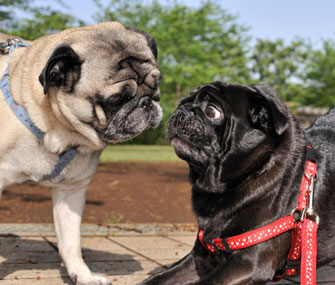[ad_1]

Thinkstock
It’s important to know which socialization techniques will work best for your dog.
One of the most common behavior problems I see among adult dogs is overly reactive or fearful behavior. People frequently think that when they see a dog that barks and lunges at other dogs or people on the leash that the dog was not properly socialized as a puppy. However, this is a common misconception. There are many owners who have put a lot of time and effort into socializing their dogs and still have animals that may cower or bark and lunge. Why would this be the case? Sometimes the socialization techniques used might not have been appropriate for these dogs. Or the dog may just have a genetic predisposition to being fearful and anxious. As most owners of these kinds of dogs soon find out, they will often receive a great deal of unsolicited advice from people when their dogs exhibit these behaviors out in public. Your best source of advice should always be your veterinarian or a local certified animal behaviorist.
Whether your dog has been fearful or reactive since he was a puppy or a youngster or you are encountering this behavior in a newly adopted adult dog, the most commonly given advice is to “socialize your dog.” You will typically hear such recommendations as:
- Let the dogs “work it out”
But how practical — and safe — are these suggestions?
Dog Parks
For some dogs who seem only mildly reactive, meeting other friendly dogs at the dog park can help bring them out of their shells. Some canines are less defensive or fearful when they are not on leash around other dogs. If you want to try this technique, then you must set your dog up for success. Before you take your dog to the off-leash park, make sure he is up-to-date on his vaccinations and make sure he reliably responds to a recall clue. If your dog will not return to you when called, you may not be able to retrieve him or remove him before an encounter with another dog gets out of control. If your dog responds to your call, then take him to the off-leash park during a time of day when there is the least number of dogs present. Choose a quiet area of the park and allow him to see other dogs at a distance. Work on counter-conditioning, which is offering your dog a treat when he looks at another dog and does not react. We want him to associate the sight of another dog with a positive emotion. Sometimes you giving your dog a treat will attract other dogs to you, so be discreet with your food rewards! Stay for short periods of time, such as two to five minutes or less, depending on your dog’s body language (for example, if he appears fearful with his head lowered, ears pulled to the side or tail tucked, it’s time to leave!).
This is a technique that may work for some dogs. However, for many others, the dog park may be a nightmare where they are bombarded with new sights, sounds and smells. It may be overwhelming to meet numerous new dogs and strangers in an unfamiliar environment. Owners often stay too long and do not recognize when their dogs have had enough. This may lead some dogs to become even more fearful or aggressive. For all these reasons, if your dog is exhibiting these behaviors, it is best to seek help from your veterinarian or local certified animal behaviorist first.

